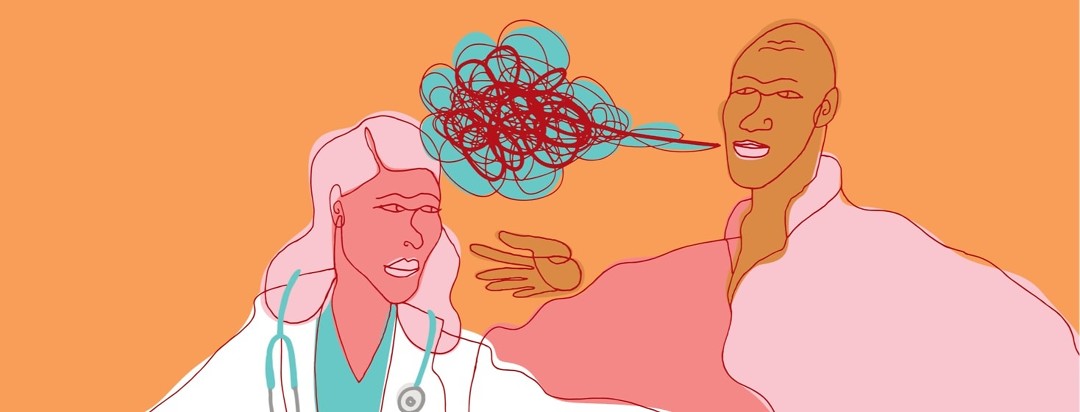Healthcare Obstacles & the LGBTQ+ Community
Editor’s Note: LGBTQ+ stands for people who identify as lesbian, gay, bisexual, transgender, or queer. To learn more about gender identity, check out the interactive website The Genderbread Person.
Have you or a loved one faced discrimination in a healthcare setting? There are many reasons why people might not be treated equally at the doctor’s office. Here we explore the effect of health disparities on those in the LGBTQ+ community.
When and where does discrimination happen?
It is not always obvious when discrimination is happening. Factors such as poverty, education, race, ethnicity, body size, gender, and sexuality can contribute to less access to appropriate healthcare, or poor quality of healthcare. Not accessing the healthcare that you need can lead to worse health outcomes. This is called a health disparity.
Studies have helped to explain the complex ways that bias plays out in healthcare settings; however, numbers likely underestimate the number of people who identify as LGBTQ+. Many population and healthcare centers differ in how they ask questions about sexuality or gender. Sometimes they don’t ask at all. This also means that the number of people affected by these disparities might be even higher than reported.1
How does discrimination lead to disparities?
Discrimination can occur before even getting to the doctor’s office. For example, in some places, LGBTQ+ community members can face obstacles finding a doctor who acknowledges their gender or sexual identity or understands the care they need. More than half of lesbian, gay, or bisexual people and more than two-thirds of transgender people said that health professionals:2-4
- Refused to see them
- Refused to touch them or used unnecessary precautions during appointments (eg. using multiple gloves when they are not needed)
- Refused to give health care related to their sexual orientation
- Refused to recognize their child or same-sex partner
- Used harsh or abusive language
- Blamed them for their health status (eg. implied that they were sexually irresponsible)
- Were physically rough or abusive
Some states allow providers to deny health services to LGBTQ+ people based on religious or moral beliefs.4 Also, the Department of Health and Human Services has removed nondiscrimination rules for LGBTQ+ people in its programs. This means rules against discrimination have been removed for all of its programs. These include health research, HIV and STI prevention, professional training and education, youth programming, elder services, homeless services, and more.5
Concern about discrimination or mistreatment often causes LGBTQ+ people to avoid or postpone preventive care and needed health care.3 Some even delay or avoid emergency care.6
How do disparities influence access to healthcare?
It can be hard for anyone to find a healthcare provider who meets their needs. A physician, hospital, community center, clinic or pharmacy that understands LGBTQ+ health specifically can be harder.3 They may be too far away, too expensive, or unavailable. It is especially hard to find providers in specialties such as mental health and in rural areas, where fewer health services exist.
These disparities can have lasting impacts. For example, trans people are less likely to have health insurance and have a staggering rate of suicide. Lesbian, gay, bisexual, and trans (LGBT) youth are more likely to experience homelessness and LGBT adults have the highest rates of drug and alcohol use.7,8
Take action to reduce health disparities
There are many ways in which healthcare professionals and centers can improve access for those in the LGBTQ+ community. Here are a few national groups spearheading these efforts:
- The American Medical Association opposes discrimination based on sex, sexual orientation or gender identity. It also supports health insurance coverage for treating gender dysphoria.7
- The Association of American Medical Colleges published a 300-page book to help medical schools teach students to provide culturally competent care to LGBT patients.8
- National LGBT Health Education Center provides educational programs, resources, and consultation to health care organizations with the goal of optimizing quality, cost-effective health care for lesbian, gay, bisexual, and transgender (LGBT) people.
Additional resources and information
- Gay and Lesbian Medical Association Provider Directory
- Healthcare Equality Index
- HealthCare.gov: Health care coverage options for same sex couples
- U.S. Department of Health and Human Services: Health and well-being for lesbian, gay, bisexual and transgender Americans
- National Clearinghouse on Family and Youth: Lesbian, gay, bisexual, transgender, and questioning youth
Have you faced health disparities or discrimination as a member of the LGBTQ+ community? What actions would you like to see taken by those in medical fields? Share in the comments.

Join the conversation